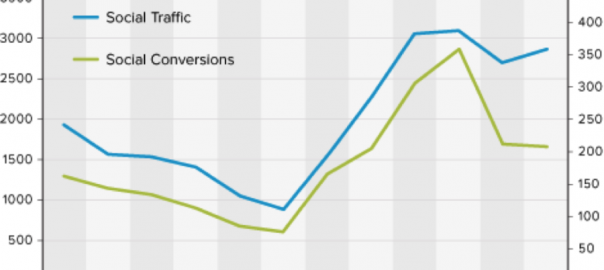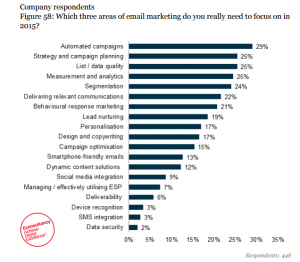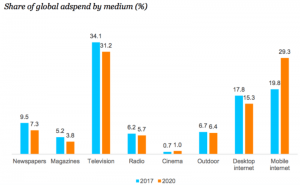Today, your firm’s transparency and perceived authenticity matter more than ever. Buyers and industry influencers want to know everything there is to know about you – and they want bone-deep truth, not fluff or airy claims.
With this new expectation of radical transparency, employee advocacy has become a tremendous asset for professional services firms. When employees help share a firm’s identity, they give powerful voice to the organization as a whole, and contribute to building valuable visibility.
Employee Advocacy Defined
Put simply, employee advocacy means using your employees as part of your social media marketing strategy. This might take a number of different forms:
- Social listening
By taking part in social media, your employees can keep an eye out both for mentions of your brand and for industry news and topics with which you should be engaged.
- Increasing the visibility of your firm
Employees can help build your firm’s visibility both by sharing their own expert perspectives and giving their audiences insight into day-to-day life at your firm.
- Helping to promote your firm’s content
By sharing your firm’s content with their own professional networks, your employees can help broadcast it to a wider but still relevant audience.
The benefits are obvious. Naturally, we would all like our employees to be engaged advocates for our firms. And as more and more firms develop employee advocates, it’s increasingly important to compete. Fortunately, with the rise of social media, employee advocacy is more practical than ever before. But it’s important to encourage advocacy the right way.
Encouraging Employee Advocates
Recently, I had the pleasure of speaking at the Employee Advocacy Shake-Up in Atlanta. The event was held by Social Media Today and sponsored by Everyone Social, a firm that provides software to manage and track the employee advocacy process.
The event featured many big names in the consumer space, such as Coca-Cola and Whole Foods. But it didn’t focus only on consumer-facing businesses – there was also a great deal of discussion around B2B and professional services, with major organizations such as Dell, Kelly Services, IBM, and E&Y in attendance.
There were several key takeaways from the presentations and conversations at the Employee Advocacy Shake-Up:
- Employees are tremendous advocates
The fact is, corporate voices face a certain degree of skepticism. Employee voices, on the other hand, are viewed as more trustworthy – helping to build that sense of authenticity and transparency that is so important.
- The impacts of employee advocacy are many and powerful
As we discussed above, it’s clear that employee advocates can have a huge impact on your firm’s visibility and reputation – in short, your brand. Employee advocacy can also help with research and marketplace insight. It can even help you provide better, more responsive client service.
- In some industries, there are barriers to employee advocacy
In industries such as financial services, there are regulatory barriers to employee advocacy. The Federal Trade Commission (FTC) polices advertising claims as well. As a result, there are concerns among professional services firms about what their social media policies should be. And these concerns can result in firms staying away from employee advocacy altogether.
Avoiding employee advocacy completely is a mistake, however. With an informed, clear-eyed strategy, firms in most industries can sidestep the challenges and open up a whole new world of engagement with their audiences.
Seizing the Opportunity
Employee advocacy is an especially opportune approach for professional services as expertise is our product. When our experts share their knowledge and perspective, they build their own reputations as well as the visibility of the firm. In fact, this is a key aspect of becoming a Visible Expert.
Until now, the potential in employee advocacy has gone widely underutilized because an “old guard” of firm partners and executives haven’t been comfortable with social media. But that’s changing – by necessity, as social media becomes a more and more integral component of the professional services marketing landscape.
Employee advocacy is a relatively young concept and practice, and so we are in a moment of great opportunity. As you build experience and develop your strategy, you will continue to gain insight into what works and what doesn’t. Hinge is active with our clients to help them find the most effective approach and seize the opportunity.
How We Help with Employee Advocacy
Hinge can help you implement an employee advocacy program. We use this approach ourselves, and we’ve implemented strategies with our clients.
What do the results look like? In June 2014, we implemented an employee advocacy program on LinkedIn.
We researched and identified relevant LinkedIn Groups that represented our industry verticals and the topics we create content on. We then assigned these groups to various team members.
The next course of action? Employee training. We provided extensive training on:
- The importance of LinkedIn for our firm and how it was going to help us achieve our goals
- All the features of LinkedIn and how to navigate the social platform
- How to build out their personal profiles
- What to share on LinkedIn (and in LinkedIn Groups) and how to share it
- How to engage with other professionals on LinkedIn
Through education and specific instructions on what to share and when, employees understood the importance of being advocates for Hinge.
The result was a huge increase in both our social media traffic and conversions.

(198)







